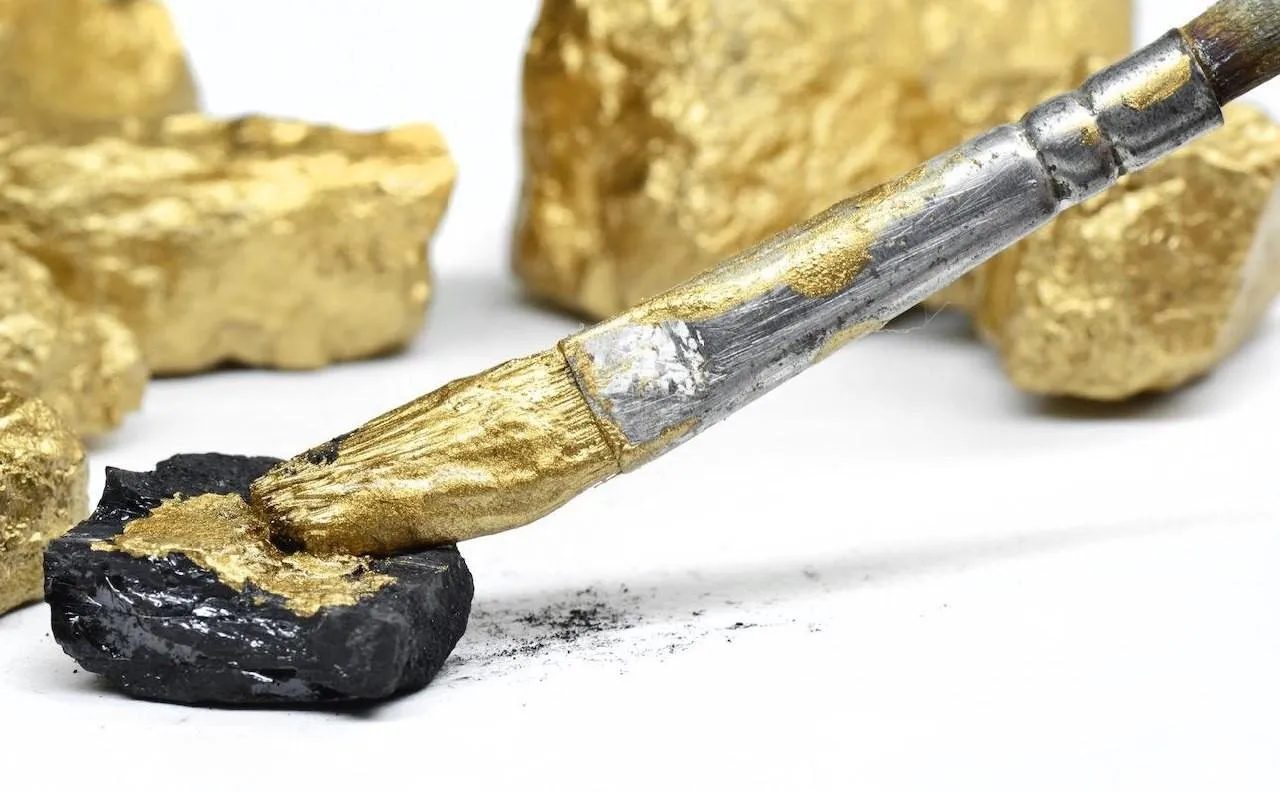 For over 2,500 years gold has been used as a money. Today, every country and central bank invest in gold, because its value is considered stable. It helps to offset more volatile investments. Currently, all the gold in the world is worth over 8 trillion dollars. It is hugely important part of the world economy.
For over 2,500 years gold has been used as a money. Today, every country and central bank invest in gold, because its value is considered stable. It helps to offset more volatile investments. Currently, all the gold in the world is worth over 8 trillion dollars. It is hugely important part of the world economy.
But Chris Powell, Secretary of the Gold Anti-Trust Action Committee says that 80% of the gold owned in the world doesn’t exist. If he is right — it is the biggest case of fraud in the history.
Over 2000 tons of gold are mined every year. Around half of that becomes jewellery, a tenth of it is put to industrial use, and the third goes into bars and coins to be held in monetary funds and central banks around the world. Gold is also traded on the market every day, bought and sold by individuals as well as funds and banks.
Like any commodities, the price of gold depends on demand for it. As a mineral, there is a final amount of the gold available. So far in human history over 175,000 tons of gold have been mined. This isn’t as much as it sounds. All the gold that has ever been mined could fit into 3.5 lengths of the Olympic swimming pool. The remaining gold underground is expected to run out shortly after 2030. The trend over the last century and price of gold steadily increases. When it runs out, the price could skyrocket. But the market could collapse even before then.
Tens of billions of dollars worth of gold is traded every day in special markets. According to Chris Powell, sales of gold are basically underwritten by the central banks. In 2009 market analyst Paul Knowchrist calculated that bullion houses who buy and sell gold own only 15,000 tons of gold to trade. He also worked out that 2,134 tons of gold were traded every day on the London Market alone. At this rate, entire world stock of investment gold changes hands every week in one market.
But gold is bought as an investment to hold on to, as its steadily increases in value. What’s more, all this gold is held by bullion trading houses — not given to the people who buy it.
Analyst Adrien Douglas says, this means that when you buy gold, you are really buying the document that just says “you own it” — which equals as paper gold. Douglas also argues, that the amount of gold sold each day compared to the amount of gold that exist means, that every ounce of gold has at least 4 owners. In effect, the bullion houses are selling gold that doesn’t exist!
In 2005 Morgan Stanley was sued by its clients for selling them non-existing precious metals. For 2 decades Morgan Stanley sold investors gold, silver, platinum and palladium, and charged them storage fees for holding it. When clients asked for the metals, nothing was ever delivered. Morgan Stanley settled the case out of court. Meanwhile, JP Morgan Chase & Co. is currently being sued for manipulating the price of silver.
In January 2017, Keith Neumeyer, the CEO of silver mining company First Majestic said, the same manipulation is being carried out in gold markets. If more gold is being sold that actually exist, it could have disastrous consequences. If Douglas is correct, each ounce of gold is owned by at least 4 people, and each one of those owners has a right to claim that ounce of gold. If people simply ask to be given the precious metals they officially own — the banks and bullion houses would become insolvent. The price of gold would then rise to stratospheric heights. As Chris Powell put it — there may not be enough zeros in the world to put behind the gold price.
This could have the effect of devaluing currencies around the world since the country ability to purchase the most important world commodity would be drastically reduced. However, the effect might be not that catastrophic. Almost every country in the world has abandoned the gold standard. This means, that currencies are not tightened to the value of gold. Rather, the value of currencies is tightened to the value of goods and services the country provides.